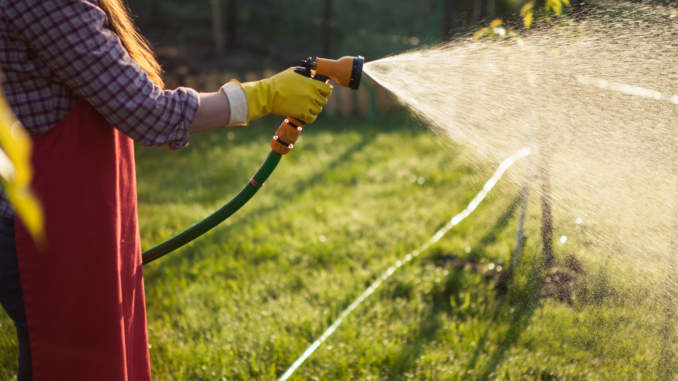
Jacob Mares | Horticulturist, Gardens on Spring Creek
Newly planted trees can become stressed quickly during periods of high temperatures and extreme drought. It is important to provide adequate amounts of water to ensure the proper establishment of new roots. The general rule of thumb is to apply 10 gallons of water per inch of tree diameter, weekly, during the summer. However, this can change with different soil conditions and periods of high temps. A week with multiple days in the nineties can quickly cause a tree to dry out and become stressed. Additionally, thick clay soils can cause water to run off and prevent uptake. What you are shooting for is keeping the root ball moist, but not inundated. Damage from under-watering and overwatering can present itself in the same way, so take steps to keep the roots properly watered.
Applying, and maintaining, an even layer of wood (or rock) mulch, three to four inches in depth, at the base of the tree will help retain moisture. Keeping this area of mulch as wide as the tree’s branches, or dripline, will keep the soil moist and cool. This has the added benefit of reducing weed growth and creating a buffer between the string trimmer/mower and the base of the tree!
Take your time when watering. Set the hose at the base of the tree on low and allow the water to penetrate the ground without running off. Treegator™ watering bags and similar products use a reservoir of water, filled by the tree steward, that slowly drain through perforations near the ground to water trees. This same technique can be achieved by drilling 10 – 20 holes with a 1/16th drill bit in the bottom of any five-gallon plastic bucket.
Trees with drip irrigation should be monitored as well for proper levels of saturation. Adjust irrigation clocks to account for severe drought or periods of excess rain. The simplest way to check moisture levels is by lightly digging in the soil near the root ball. Is the soil wet? Is it dry?
All of these methods share one common denominator that will make them work – and that’s us. The tree, and the conditions surrounding it, give us all the clues we need to apply the correct amount of water. Check the canopy of the tree for yellowing or curling of leaves. Die back of the top branches is a late indicator of a stressed tree.
On the flip side of things, it’s possible to overwater trees in these same conditions. When the soil has too much moisture it can become anaerobic. This happens when oxygen present in the pore spaces of soil is replaced with water, essentially drowning the roots. Heavy clay soils have even less pore space available which can greatly exacerbate this problem. Fungal issues can quickly follow. Again, the damage caused by this type of stress can present itself in the same fashion as too little water.
Water is generally the one element of plant care we can totally control. This can be the cultural practices we employ when we water and care for our trees or simply choosing a plant that requires less water. Staying ahead of these stressful conditions with a good base knowledge of your planting site, combined with a strong watering plan will help you create a landscape full of established trees!
Support Northern Colorado Journalism
Show your support for North Forty News by helping us produce more content. It's a kind and simple gesture that will help us continue to bring more content to you.
BONUS - Donors get a link in their receipt to sign up for our once-per-week instant text messaging alert. Get your e-copy of North Forty News the moment it is released!
Click to Donate
